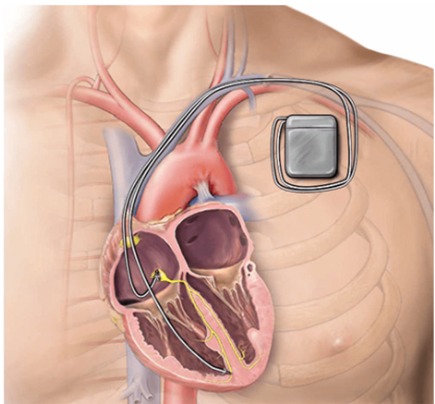ICD
An implantable cardioverter defibrillator (ICD) is a medical device that monitors your heart and manages heart rate when needed. It’s surgically placed under your skin and connects to your heart with thin wires (leads). The battery-powered device can deliver an electric shock to correct life-threatening arrhythmia and prevent sudden cardiac arrest.
It consists of a battery and thin wires called leads. The battery is about the size of a stopwatch and the leads go into your heart chambers to regulate your rhythm.
The battery-powered device constantly tracks heart rate and rhythm. Its pulse generator delivers an electric shock when needed to correct arrhythmia. The leads carry the shock to your heart.
ICDs are used to:
Correct arrhythmia, such as a heart rate or rhythm that’s irregular, too fast tachycardia or too slow bradycardia.
Prevent sudden cardiac arrest.
Gather data about your heart’s function to help your healthcare providers make treatment recommendations.
What’s the difference: Implantable cardioverter defibrillator vs a pacemaker?
An ICD is different than a pacemaker. A pacemaker consistently maintains a normal heart rate. An ICD monitors your heart rate and intervenes only when necessary. However, some ICDs can function as pacemakers, too.
